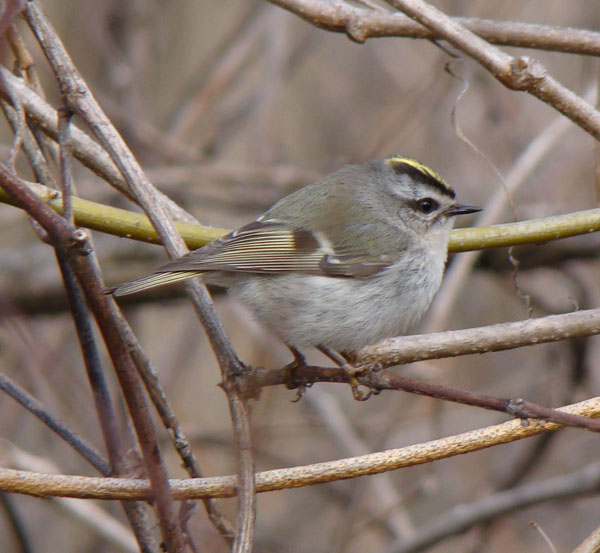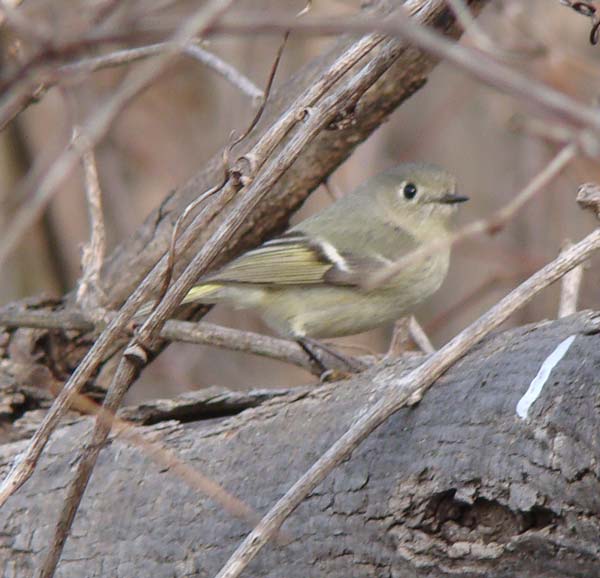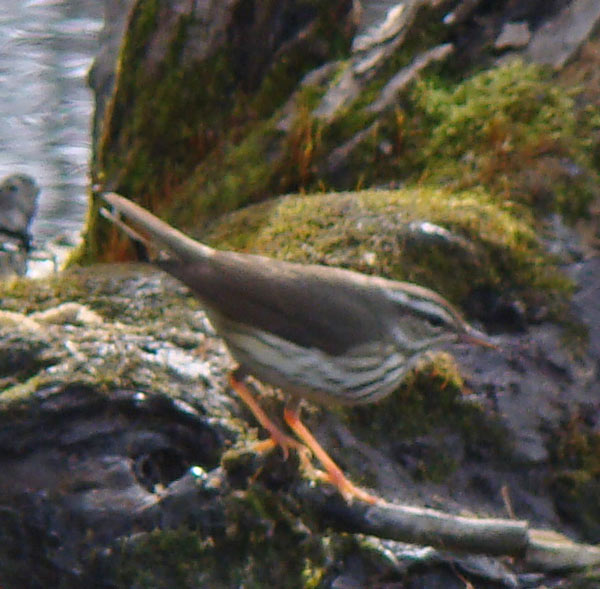Spring migration for smaller birds is just getting started, so it’s a good time to get started with watching birds. There’s a good variety of birds flitting through the trees and shrubs, but not so many that you’ll be overwhelmed. With that in mind, here are Ethan’s photos of some birds that arrived in our area during the past month. Most of these birds will continue north to nest — watch for them now, because you might not see them again until fall.
We did a post about Brown Creepers back in mid March, but now we’re seeing more of them than ever (six on our last visit to Columbus Park). Watch for Brown Creepers on tree trunks and larger branches. They’re tiny, but they aren’t too shy — you sometimes can get within 10 or 20 feet of them:

Tiny kinglets explore smaller branches in search of bugs. They are fairly bold around humans, but they rarely sit still for long. Golden-crowned Kinglets arrived first in our neighborhood about a month ago, and they still are the more common kind:

Ruby-crowned Kinglets arrived in Columbus Park in early April, and they’ll stay a bit later in the spring:

This Ruby-crowned Kinglet turned away and fluffed its head feathers, so you can see its namesake crown:

We saw our first warbler this spring on April 5th. It was a Yellow-rumped Warbler, and we watched it flit from branch to trunk to ground and back in Columbus Park. Our friend Ari calls this bird “butter butt,” for an obvious reason:

We saw our second warbler of spring at The Grove in Glenview, Illinois. Although its name, coloration, and behavior suggest another kind of bird, the Louisiana Waterthrush really is a warbler. It’s most often seen near water, bobbing its butt as it walks along the bank:

Its cousin, the Northern Waterthrush, arrives a bit later in the spring. We see them both at Columbus Park, often at the base of rockwork that surrounds the pool behind the Refectory. (Telling waterthrushes apart can be a challenge — go here to get some hints.)
Spring is also a season for sparrows, which are slight larger that most kinglets and warblers and often harder to identify. We’ll post photos of common sparrows later this month. For now, here’s a kind of blackbird that looks like a giant sparrow. Male Red-winged Blackbirds arrived here weeks ago to set up territories in marshy spots — now the females are showing up to choose their mates:

That’s it for now. We’ll be keeping track of bird arrivals and depatures this spring, and Ethan will take lots more photos. As always, we’ll use this blog to let you know what’s happening with our neighborhood nature.
You can read about our most recent bird sightings at Columbus Park on this page. We track the birds we see on our block on this page, and the other neighborhood birds we see are listed here.
—–
Note added April 17, 2009: This post was our contribution to the I and the Birds #98 blog carnival. Go here to see more examples of the diversity of birds across the globe.